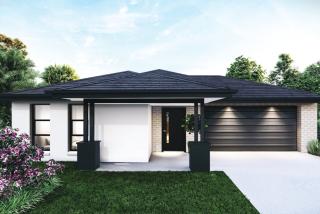National rents remain tight, but opportunities are emerging for savvy investors
Australia’s rental market continues to show remarkable resilience, with the national vacancy rate holding firm at 1.2% in August 2025. According to SQM Research, this equates to just 37,742 vacant rental properties nationwide 121 fewer than the previous month
For property investors, the data tells a story of strong tenant demand, limited supply, and opportunities for carefully positioned investments.
Capital City Insights
While the national figure was stable, individual capital cities showed important variations:
-
Sydney: The vacancy rate tightened to 1.4%, the lowest in more than a year, with just 10,211 properties available.
-
Melbourne: Vacancies rose slightly to 9,620, holding the vacancy rate at 1.8%. Leasing activity has slowed, creating a more balanced market.
-
Brisbane: Remains a standout performer with a vacancy rate of 1.0% and only 3,423 properties available. Strong tenant demand continues to underpin investor confidence.
-
Perth & Adelaide: Still some of the tightest markets in the country, with rates of 0.7% and 0.8% respectively.
-
Darwin & Hobart: Both capitals sit at a remarkable 0.5% vacancy, underlining extreme tightness in rental supply.
-
Canberra: A seasonal lift pushed vacancies to 1.6%, showing some easing compared to other capitals
For investors, these figures highlight that capital city performance is far from uniform. Cities like Sydney and Brisbane remain prime hunting grounds for those looking for strong rental demand and relatively low vacancy risk.
Rental Trends: Units Outperforming Houses
Nationally, combined rents rose 0.4% month-on-month and 4.6% year-on-year, with units outperforming houses across most capitals. In a separate series based on weekly averages, the national combined rent was $653.54 for the week ending 4 September, up 0.4% month-on-month but down 2.2% year-on-year
-
Sydney: Combined rents rose 0.5% for the month, up 4.2% annually, largely driven by unit demand.
-
Melbourne: Rent levels were flat for the month, with modest 2.9% annual growth, reflecting its higher vacancy rate.
-
Brisbane: The strongest of the major capitals, with 0.6% monthly and 7.3% annual rent growth.
-
Perth: A dip of 1.0% month-on-month contrasted with healthy 5.6% annual growth.
-
Adelaide: Stable conditions with 0.4% monthly and 2.4% annual growth.
-
Canberra: Rents softened, falling 0.9% monthly, though still up 1.2% year-on-year.
-
Darwin: Combined rents rose 8.9% annually, with unit rents surging 16.7%.
-
Hobart: The standout performer, with a 0.9% monthly rise and a robust 10.6% annual increase
The key takeaway for investors is that unit markets are leading growth, particularly in smaller capitals and lifestyle cities. This reflects shifting tenant preferences, affordability pressures, and stronger demand for centralised, low-maintenance housing.
What This Means for Investors
Louis Christopher, Managing Director of SQM Research, summed up the market outlook:
“The national vacancy rate has held firm at 1.2%, suggesting ongoing shortages in rental supply across most capital cities. Sydney continues to tighten, while Hobart shows double-digit annual rent growth and Darwin’s unit market is surging. Overall, the market remains tight, though the days of 20%+ rental growth are behind us”
For investors, this means:
-
Rental demand is strong: Particularly in Brisbane, Hobart, and Darwin, where vacancy rates are extremely low.
-
Units are outperforming: Investors considering apartments or smaller dwellings may benefit from stronger rental momentum.
-
Affordability pressures are real: Policymakers may step in if Sydney or Darwin rents continue rising sharply, so investors should factor this into long-term planning.
-
Opportunities in stabilising markets: Melbourne and Canberra, with slightly higher vacancy rates, could provide entry points for investors seeking less competition and more bargaining power.
Australia’s rental market remains tight, but with clear shifts occurring beneath the surface. For property investors, the low national vacancy rate of 1.2% signals ongoing demand, yet the real opportunities lie in identifying cities and dwelling types where demand is outpacing supply.
Brisbane, Hobart, and Darwin are proving especially resilient, while Sydney continues to be undersupplied. Investors looking to diversify might also consider stabilising markets such as Melbourne and Canberra, where entry costs remain more manageable.
Visit our website www.ausinvestmentproperties.com.au to view all our available investment properties.
Source: SQM Research
_1758680457EfP8W-cover.png)
_1764731815HUFUX-card.jpg)
_1764211036lHsm6-card.png)
_1762916285NoFl4-card.jpg)
_17623130443GJfk-card.jpg)
_1760408926gJ50A-card.jpg)


_1764731815HUFUX.jpg)
_1764211036lHsm6.png)
_1762916285NoFl4.jpg)
_17623130443GJfk.jpg)
_1760408926gJ50A.jpg)
_17598783571Kaml.jpg)



